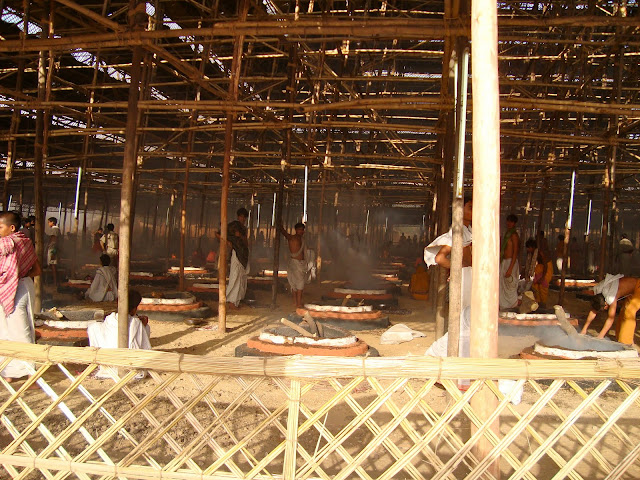The unattractive building was large and square and official - I hadn't enjoyed my previous visits. For a start the stairs had a horrible odour, corridors were dark and unfriendly and the offices were either empty or occupied by bored officials, who seemed to have nothing to do and resented the presence of outsiders.
I found the right office, two women were sweeping out the previous day's accumulation of dust, with their charoos - I greeted them in Gujarati "kem cho" - "majama" they replied unsmilingly. I was left in an empty room with a row of hard seats facing the Chief's desk. I sat down and waited. The room was filled from floor to ceiling with bundles of papers tied with official pink string. I had once seen a mouse scurrying round the room and wondered where it was now. The women had left one window open to air the room and it was a relief to see the world outside and the greenery of a large Neem Tree. I waited nervously....I hated this building and always felt intimidated by the rudeness of petty officials and the glowering brusqueness of the Chief.
He walked briskly into the room - surprisingly, he greeted me with an off-handed 'good morning', then picked up a duster and began dusting the area around his desk, a colleague came in to talk to him. I waited patiently.....when he had gone, the Chief continued with his dusting. Then standing in front of his desk, he raised his hands together in prayer, looking inward and upward, touched his forehead and then his chest and bent down and kissed his desk. Sitting down in his chair, he looked over at me: "And what can I do for you" he said ....... I hoped my astonishment at his civility, didn't show on my face.....!
I found the right office, two women were sweeping out the previous day's accumulation of dust, with their charoos - I greeted them in Gujarati "kem cho" - "majama" they replied unsmilingly. I was left in an empty room with a row of hard seats facing the Chief's desk. I sat down and waited. The room was filled from floor to ceiling with bundles of papers tied with official pink string. I had once seen a mouse scurrying round the room and wondered where it was now. The women had left one window open to air the room and it was a relief to see the world outside and the greenery of a large Neem Tree. I waited nervously....I hated this building and always felt intimidated by the rudeness of petty officials and the glowering brusqueness of the Chief.
He walked briskly into the room - surprisingly, he greeted me with an off-handed 'good morning', then picked up a duster and began dusting the area around his desk, a colleague came in to talk to him. I waited patiently.....when he had gone, the Chief continued with his dusting. Then standing in front of his desk, he raised his hands together in prayer, looking inward and upward, touched his forehead and then his chest and bent down and kissed his desk. Sitting down in his chair, he looked over at me: "And what can I do for you" he said ....... I hoped my astonishment at his civility, didn't show on my face.....!


































